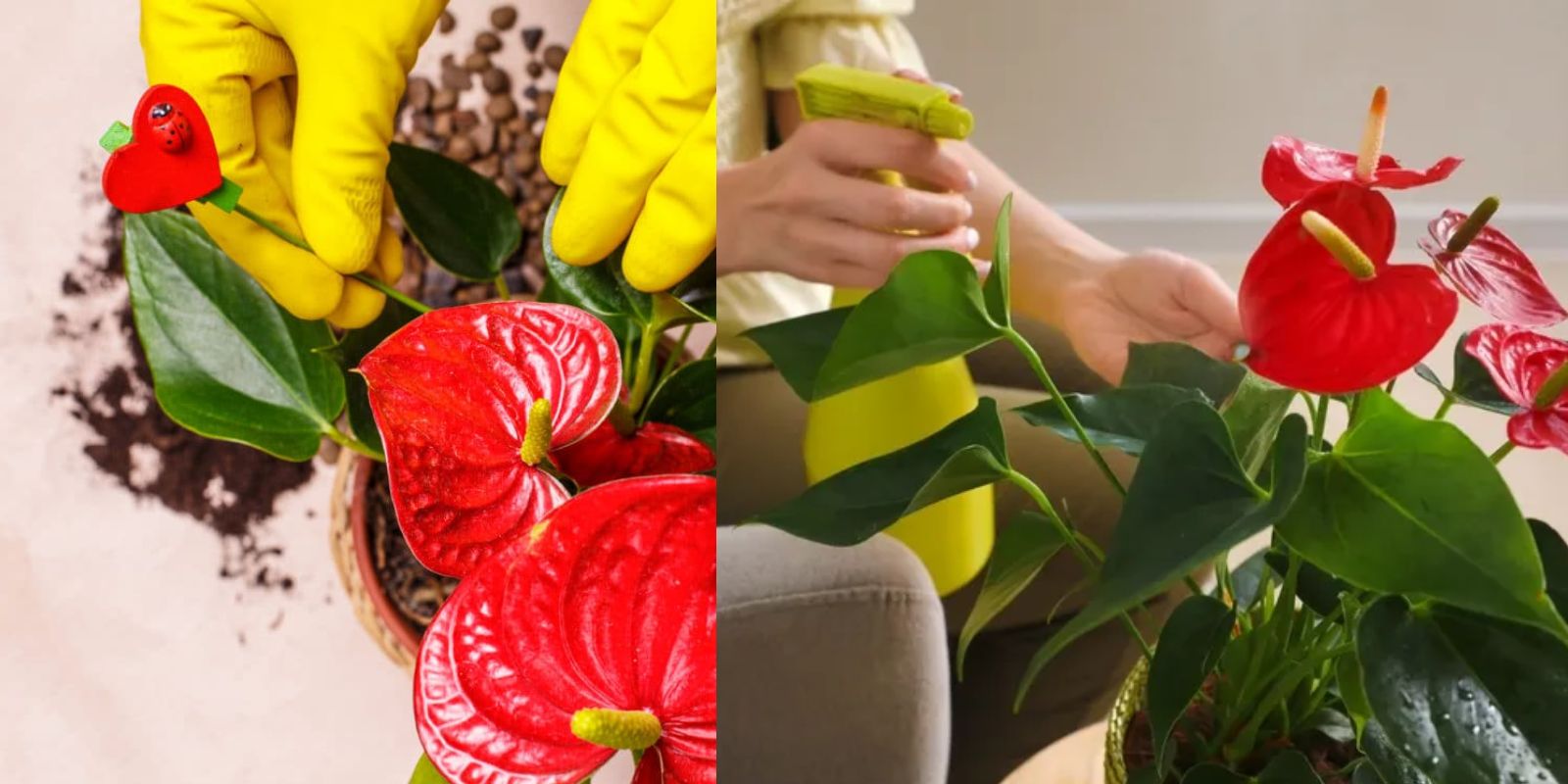Anthuriums, often referred to as “flamingo flowers” due to their vibrant, glossy blooms, are among the most popular indoor plants. Their stunning red, pink, or white spathes and their ability to add a splash of color to any room make them a sought-after choice for plant enthusiasts. Despite their appeal, many people find it challenging to get their Anthuriums to bloom. If you’re struggling with this issue, a little-known tip might be the key to unlocking the full potential of your Anthurium plant.
Understanding Anthurium Blooming
Before diving into the secret tip, it’s essential to understand why Anthuriums might not bloom as expected. Several factors can affect blooming, including light, humidity, water, and nutrients. Anthuriums are tropical plants that naturally thrive in environments with high humidity and moderate light. Their unique flowering structure—an elongated spadix surrounded by a colorful spathe—requires specific care to maintain its health and encourage blooms.
The Secret Tip: Enhancing Bloom Potential
The key to making your Anthurium bloom lies in optimizing its environment and care routine. Here’s a step-by-step guide to help you achieve a vibrant and blooming Anthurium.
1. Provide Adequate Light
Why It Matters: Anthuriums need bright, indirect light to thrive. Insufficient light can lead to poor blooming and overall weak plant growth. On the other hand, too much direct sunlight can scorch the leaves, causing damage.
How to Implement: Place your Anthurium in a spot with bright, filtered light. An east-facing window or a location with indirect sunlight works best. If natural light is limited, consider using grow lights to supplement.
2. Maintain Proper Humidity
Why It Matters: Anthuriums are native to tropical regions, where humidity levels are naturally high. Dry indoor air can stress the plant and inhibit blooming.
How to Implement: Increase humidity around your Anthurium by misting the plant regularly. Alternatively, place a humidifier nearby or set the pot on a tray filled with water and pebbles to create a humid microclimate. Ensuring high humidity can help the plant produce and sustain its beautiful blooms.
3. Water Correctly
Why It Matters: Proper watering is crucial for Anthurium health. Overwatering can lead to root rot, while underwatering can stress the plant and prevent blooming.
How to Implement: Water your Anthurium when the top inch of soil feels dry. Ensure that the pot has good drainage to prevent water from pooling at the bottom. Use a potting mix designed for tropical plants that allows for proper aeration and drainage.
4. Use a Balanced Fertilizer
Why It Matters: Anthuriums benefit from regular feeding to support their growth and blooming. A balanced, water-soluble fertilizer provides the necessary nutrients to promote vibrant blooms.
How to Implement: Feed your Anthurium with a balanced fertilizer (such as 10-10-10 or 20-20-20) every 6-8 weeks during the growing season (spring and summer). Follow the manufacturer’s instructions for dosage and application. Avoid over-fertilizing, as this can lead to nutrient imbalances.
5. Repot as Needed
Why It Matters: Over time, the soil in the pot can become compacted or depleted of nutrients. Repotting refreshes the soil and provides more space for the plant to grow.
How to Implement: Repot your Anthurium every 1-2 years, or when you notice that the plant has outgrown its pot. Choose a slightly larger pot and use a well-draining potting mix. Gently remove the plant from its old pot, loosen any bound roots, and place it in the new pot with fresh soil.
6. Monitor for Pests and Diseases
Why It Matters: Pests and diseases can stress the plant and impact its ability to bloom.
How to Implement: Regularly inspect your Anthurium for signs of pests like aphids, spider mites, or scale. Treat any infestations promptly with appropriate insecticidal soap or natural remedies. Also, watch for signs of fungal or bacterial diseases, and adjust care practices to prevent their spread.
Additional Tips for Blooming Success
- Temperature: Maintain a temperature range of 65-85°F (18-29°C) for optimal growth and blooming. Avoid exposing the plant to cold drafts or sudden temperature changes.
- Leaf Care: Clean the leaves occasionally with a damp cloth to remove dust and allow for better light absorption.
- Bloom Duration: To extend the blooming period, remove spent blooms regularly. This encourages the plant to produce new flowers.
Motivational Note
Unlock the full potential of your Anthurium with this simple yet effective tip. By providing the right light, humidity, water, and nutrients, you’ll not only enjoy its stunning blooms but also enhance the overall health and vibrancy of your plant. Embrace the joy of a flourishing Anthurium and let its beauty brighten your indoor space year-round! 🌺✨
Conclusion
Achieving a beautiful, blooming Anthurium doesn’t have to be a challenge. By understanding and implementing the essential care requirements—particularly optimizing light, humidity, and feeding—you can ensure that your Anthurium thrives and produces stunning blooms. With these tips, you’re well on your way to creating a vibrant and visually striking indoor garden that will captivate and inspire.

